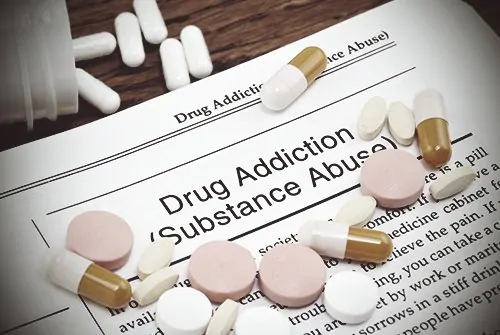
The media plays a crucial role in shaping public perception of drug abuse, acting as both a mirror and an influencer of societal attitudes. This dual role is significant because the portrayal of drug abuse in various media forms can influence public opinion, policy-making, and even the behaviour of individuals. It is important to examine the various ways through which media influences perceptions of drug abuse, including the types of media, the framing of drug-related stories, and the consequences of these portrayals. If you know anyone struggling, a helpline can get professionals involved to improve their condition.
Types of Media and Their Influence on the Perception of Drug Abuse
Media encompasses a broad range of platforms, including traditional outlets like newspapers, television, and radio, as well as digital media like social media, blogs, and online news sites. Each platform has unique characteristics that influence how drug abuse is portrayed and perceived.
Traditional Media
Newspapers and television have historically played a significant role in shaping public perceptions. These outlets often highlight extreme cases of drug abuse, focusing on criminal activities, overdoses, and the socioeconomic consequences of addiction. Such coverage can perpetuate stereotypes about drug users, painting them as morally weak or criminally inclined individuals. The repetitive nature of these stories can lead to public fear and stigmatisation of drug users, which can hinder efforts toward compassionate treatment and rehabilitation.

Newspapers as Traditional Media
Digital and Social Media
With the advent of digital media, the narrative around drug abuse has diversified. Social media platforms like Twitter, Facebook, and Instagram allow for real-time sharing of information and personal stories. This democratisation of content creation enables individuals to share their experiences with drug abuse, often countering the negative stereotypes perpetuated by traditional media. However, social media also has the potential to glamorise drug use through the portrayal of drug culture in music videos, movies, and influencer posts. It’s especially harmful to expose this to younger, more impressionable audiences.

Social Media
Framing of Drug-Related Stories
The way the media frames drug-related stories greatly affects public perception. Media framing involves selecting and emphasising certain aspects of a story while omitting others, thus influencing how the audience understands the issue.
Sensationalism
Media often sensationalise drug abuse stories to attract viewers or readers. Headlines emphasising dramatic or extreme aspects of drug abuse can create a distorted view of the prevalence and nature of drug addiction. This sensationalism can lead to public panic and support for harsh punitive measures rather than treatment-based approaches. Several movies and TV series glorify drug abuse as well, adding to the problematic framing of drugs to younger audiences.

‘The Wolf of Wall Street’ was criticised for its drug scene.
Victimisation and Criminalisation
The portrayal of drug users either as victims needing help or as criminals deserving punishment influences public and policy responses. When the media frames drug users primarily as criminals, it supports policies centred on law enforcement and incarceration. Conversely, framing drug users as victims of circumstances can generate empathy and support for rehabilitation and harm reduction strategies. The TV series, ‘This Is Us’, portrays the devastating side of victims of drug abuse in a healthy manner and depicts how you can come out of it better.

William Hill, from This Is Us, shows us that recovering from drug abuse can brighten life.
Public Health Perspective
Increasingly, some media outlets are adopting a public health perspective when discussing drug abuse. This approach highlights the need for medical treatment, mental health support, and community-based interventions. By focusing on the underlying causes of addiction and presenting stories of recovery and rehabilitation, the media can contribute to a more informed and compassionate public understanding of drug abuse.

Public Health Approach to Drugs
Consequences of Media Portrayals
Policy Influence
Media coverage can influence drug policy by shaping public opinion. Politicians and policymakers often respond to public sentiment, which is, in part, shaped by media narratives. For example, the media-driven “war on drugs” in the 1980s and 1990s led to harsh sentencing laws and an increase in incarceration rates for drug-related offences in the United States.

Drug Policy
Stigma and Discrimination
Negative media portrayals contribute to the stigma associated with drug addiction. Stigmatisation can deter individuals from seeking help due to fear of judgment or discrimination. This can perpetuate the cycle of addiction and hinder public health efforts to address the issue.

Stigma and Discrimination
Awareness and Education
On the positive side, the media can raise awareness about the realities of drug abuse and promote educational campaigns. Documentaries, investigative reports, and public service announcements can inform the public about the dangers of drug abuse, the importance of prevention, and the availability of treatment options.

Drug Abuse Resistance Education
Behavioural Influence
Media can also influence individual behaviour. For example, the portrayal of drug use in movies and television shows can affect social norms and attitudes toward drugs. While negative portrayals can deter use, glamorised depictions can have the opposite effect, particularly among impressionable youth.

‘Euphoria’ accused of glorifying drug abuse.
Social media plays a multifaceted role in shaping public perception of drug abuse. Through various types of media and framing techniques, the portrayal of drug abuse can either reinforce negative stereotypes or foster a more nuanced understanding of addiction. The consequences of these portrayals influence public opinion, policy, and individual behaviours. As social media continues to evolve, it is crucial for content creators, journalists, and policymakers to be mindful of the power of media narratives and strive for balanced and responsible reporting on drug abuse issues.


Media has a huge impact on our views of drug abuse. Traditional media often sensationalizes it, creating fear and stigma. Social media offers a mix—personal stories and glamorization. How stories are framed matters: criminals vs. victims, punishment vs. rehab. Positive portrayals can raise awareness and support recovery. Let’s push for more compassionate, informed coverage! 📺📰 #DrugAwareness #MediaInfluence #EndStigma